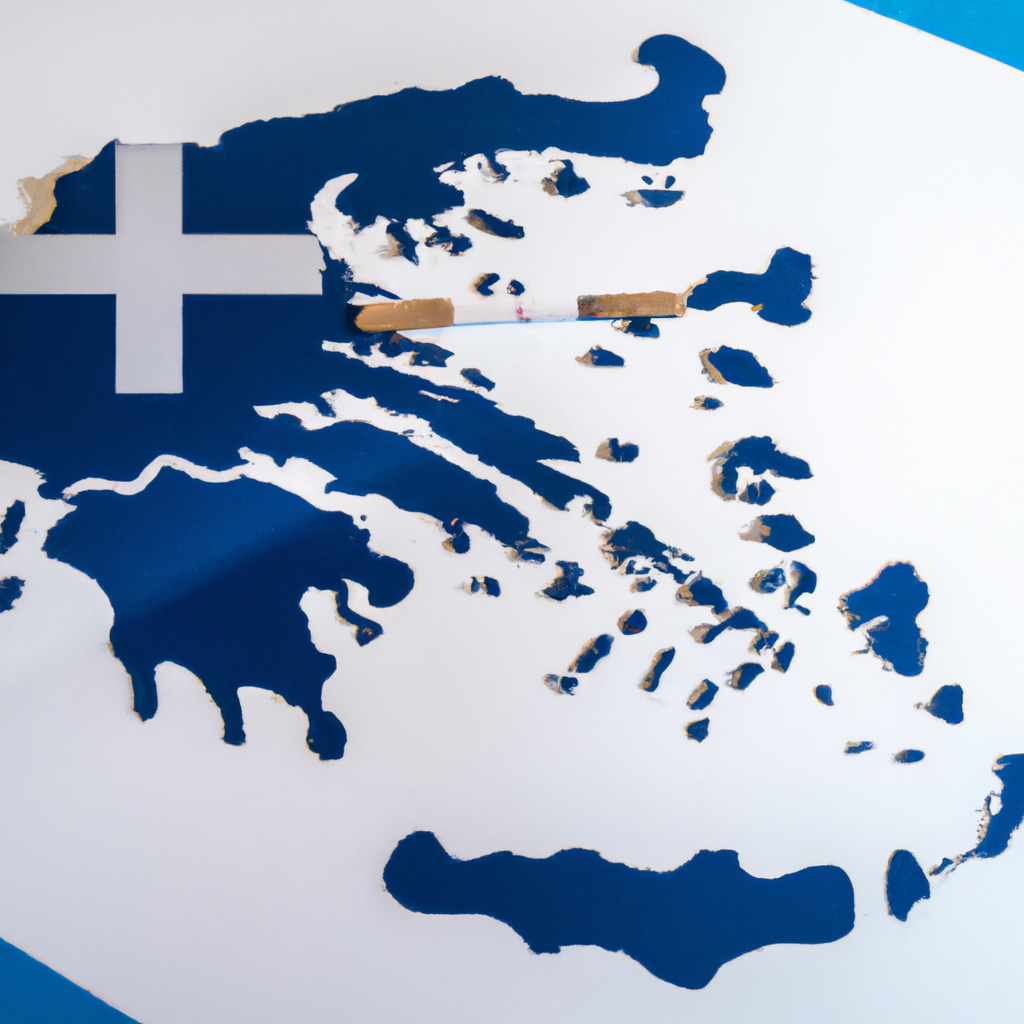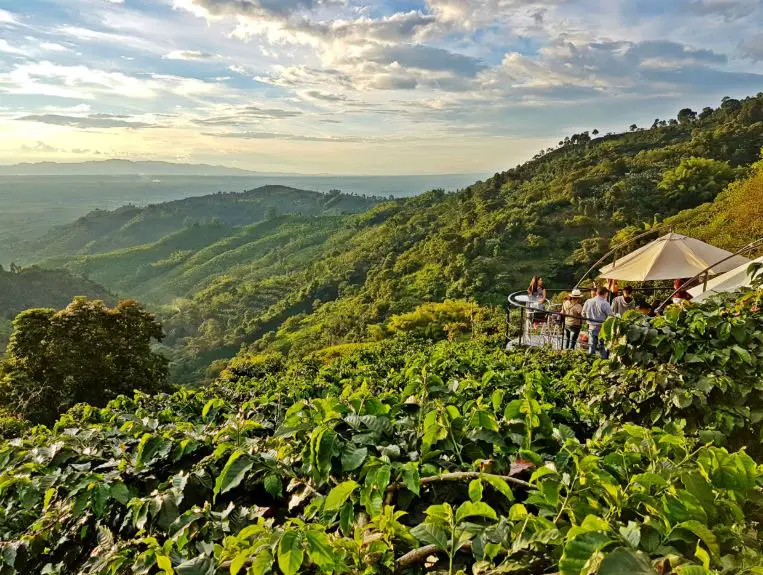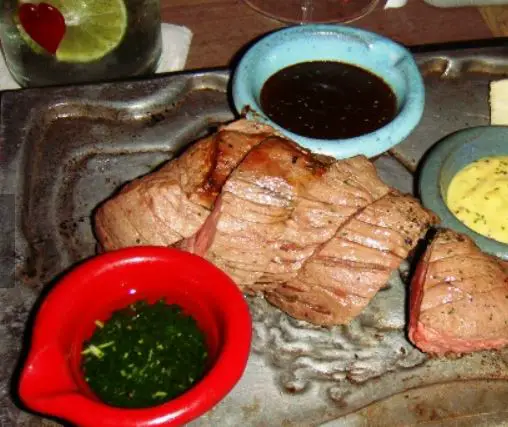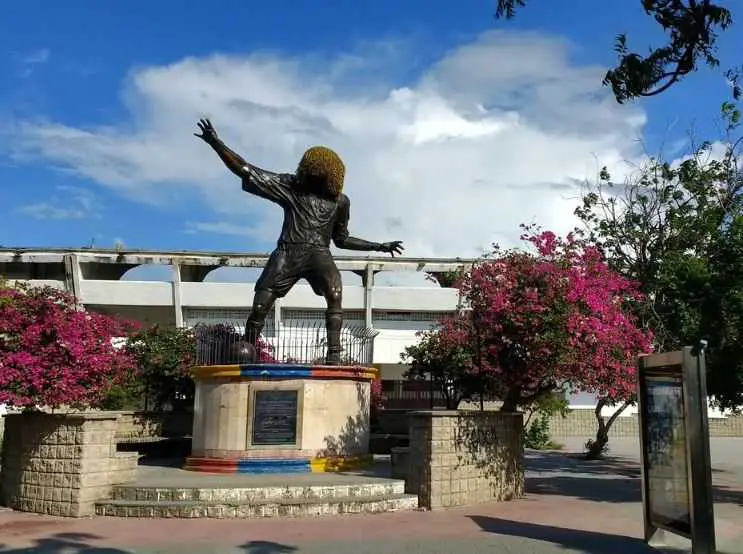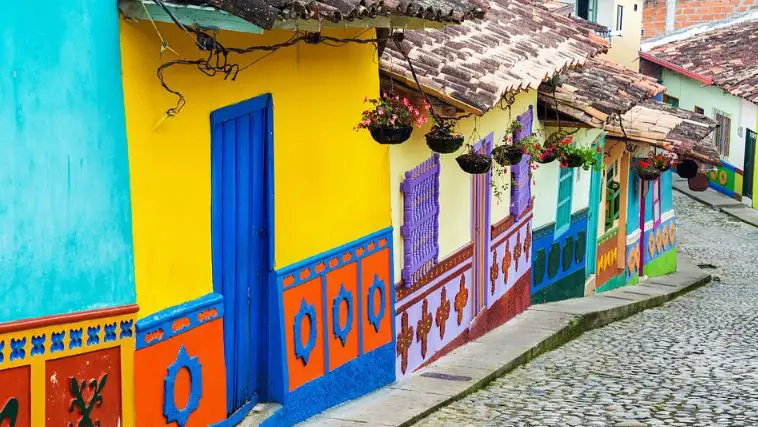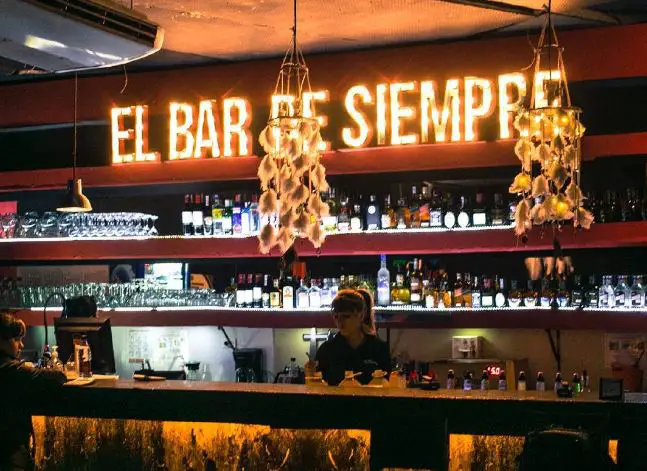Bogotá, Colombia: Interesting Facts,History, Things to do,Why to Visit
Post ByAdequate Travel
Bogotá, Colombia – a vibrant and diverse South American city with an intriguing history and plenty of interesting facts to uncover. From colonial-era buildings to modern-day attractions, this lively city has something to offer everyone. When you visit, you'll be struck by its magical energy and the wide range of activities on offer – from taking part in thrilling outdoor excursions to dining in upscale restaurants. Whether you're looking for a cultural experience or a chance to explore the natural beauty of this area, Bogotá has something for you. Come and discover why this city deserves a place on every traveler's bucket list.
Colombia is a country located in South America. It is known for its vibrant culture, diverse landscapes, and turbulent history. Colombia has a population of approximately 50 million people and a rich ethnic mix, including indigenous groups, Europeans, Africans, and mestizos.The country's economy is diverse, with major industries including oil, mining, agriculture, and manufacturing. It is one of the world's leading producers of coffee and is also known for its exports of flowers, emeralds, and textiles.Colombia has faced significant challenges, including a long-running armed conflict between the government, leftist guerrilla groups, and paramilitary forces. However, progress has been made in recent years with the signing of a peace agreement in 2016, which has led to a decrease in violence. Despite this, Colombia still faces issues related to drug trafficking, organized crime, and social inequality.Tourism has been growing steadily in Colombia, with visitors attracted to its natural beauty, colonial cities, and diverse wildlife. Popular destinations include the vibrant capital city of Bogotá, the walled city of Cartagena on the Caribbean coast, and the lush coffee region.Overall, Colombia offers a unique blend of history, culture, and natural beauty, while still grappling with social, economic, and security challenges.Exploring the city's diverse neighborhoods is one of the best ways to discover the best colombia attractions, each with its own character and charm.
Interesting facts
Geographical Diversity
Colombia is known for its geographical diversity as it is home to a wide range of landscapes, climates, and ecosystems. The country has the Andes mountain range running through its western side, the Amazon rainforest covering its southern region, the Caribbean and Pacific coastlines, and even some deserts in the north. This unique geographical diversity makes Colombia one of the most biodiverse countries in the world.
Examples:
- The Andes mountains offer breathtaking views and opportunities for activities like hiking and trekking.
- The Amazon rainforest in Colombia is home to a diverse range of flora and fauna.
- The Caribbean coastline offers stunning beaches and vibrant coastal cities like Cartagena and Santa Marta.
Coffee Production
Colombia is famous for its high-quality coffee production. The country's ideal climate, fertile soil, and high altitude make it an ideal location for coffee cultivation. Colombia is the third-largest coffee producer in the world and is renowned for its smooth and well-balanced Arabica beans.
Example:
- Colombian coffee is internationally recognized for its rich flavor and aroma, and it is enjoyed by coffee lovers worldwide.
Cultural Heritage
Colombia has a rich cultural heritage influenced by its indigenous, African, and Spanish roots. The country takes pride in its diverse and vibrant culture, which can be seen in its music, dance, art, and gastronomy. Colombian festivals, such as the Carnaval de Barranquilla and the Feria de Cali, showcase the country's lively traditions and cultural celebrations.
Examples:
- The traditional Colombian dance form, cumbia, is recognized as a UNESCO Intangible Cultural Heritage of Humanity.
- Colombian cuisine, known for dishes like arepas, bandeja paisa, and empanadas, reflects the country's cultural diversity.
- Colombian artists like Fernando Botero and Gabriel García Márquez have made significant contributions to the world of art and literature.
Biodiversity
Colombia is one of the most biodiverse countries on the planet, housing a wide array of plant and animal species. It is home to approximately 10% of the world's biodiversity, with countless endemic species found nowhere else in the world. The country's diverse ecosystems, including rainforests, cloud forests, and coral reefs, contribute to its exceptional biodiversity.
Examples:
- The national parks in Colombia, such as Tayrona National Natural Park and Los Nevados National Natural Park, offer opportunities for wildlife spotting and nature exploration.
- Colombia is home to iconic species like the Andean condor, jaguars, toucans, and numerous species of orchids.
From museums to parks,colombia tourist attractions offer something for everyone, making it a versatile destination for all type of tourists.History of Colombia
Colombia, officially known as the Republic of Colombia, is a country located in the northwest of South America. It has a rich and diverse history that dates back thousands of years. Here is a detailed overview of Colombia's history:Pre-Columbian Era
The history of Colombia traces back to the pre-Columbian era when several indigenous civilizations inhabited the region. Notable among these were the Tayrona, Muisca, and Quimbaya peoples. These civilizations had advanced agricultural practices, built impressive infrastructure, such as roads and aqueducts, and created intricate works of art and goldsmithing.Spanish Colonial Period
Colombia was first discovered by Europeans when Christopher Columbus arrived on its Caribbean coast in 1498. The Spanish conquistadors quickly colonized the region, led by Gonzalo Jiménez de Quesada. The area that is now Colombia became part of the Spanish Empire and was named the Viceroyalty of New Granada. The Spanish rule persisted for more than 300 years.Independence from Spain
The independence movement in Colombia began in the early 19th century, inspired by the ideals of the American and French Revolutions. On July 20, 1810, a group of patriots in Bogotá started the fight for independence. This marked the beginning of the Colombian War of Independence, which lasted until 1819.Gran Colombia
After gaining independence from Spain, Colombia, along with Venezuela, Ecuador, and Panama, formed the Republic of Gran Colombia in 1819. Simón Bolívar, known as the liberator of several South American countries, played a crucial role in creating this union. However, internal conflicts and regional differences led to the dissolution of Gran Colombia in 1831, resulting in the formation of separate countries.Conflict and Modern Colombia
Throughout the 20th century, Colombia faced numerous internal conflicts, political instability, and drug trafficking issues. The most infamous drug lord, Pablo Escobar, gained notoriety during this period. However, in recent years, Colombia has made significant progress in reducing violence and improving its economy. The government has actively engaged in peace negotiations with various guerrilla groups, leading to the signing of a historic peace agreement with the largest rebel group, the Revolutionary Armed Forces of Colombia (FARC), in 2016.Overall, Colombia's history is a testament to its resilience and ability to overcome challenges. It has transitioned from being a Spanish colony to an independent nation and has taken significant steps towards peace and stability in recent times.Examples:
- The Tayrona civilization in Colombia left behind impressive archaeological sites such as Ciudad Perdida (Lost City).- Gonzalo Jiménez de Quesada, the Spanish conquistador, founded the city of Santa Fe de Bogotá, which later became the capital of Colombia (now known as Bogotá).- Simón Bolívar, a key figure in Latin American independence, was born in Venezuela but played a crucial role in Colombia's struggle for independence.- The city of Medellín, once known for its association with drug cartels, has transformed itself into a vibrant and innovative metropolis with modern infrastructure and cultural initiatives.Exploring the rich heritage of historical sites in colombia is a journey through time and culture.Famous Things of Colombia
1. Coffee: Colombia is renowned worldwide for its high-quality coffee. The country's unique geographical conditions, including rich volcanic soil and ideal temperature and rainfall patterns, make it a prime location for coffee cultivation. Colombian coffee has a rich and distinct flavor, and the country is one of the largest coffee producers in the world.
2. Emeralds: Colombia is one of the world's largest producers of emeralds. The country's mines yield some of the finest emeralds in terms of color, clarity, and size. The Muzo and Chivor mines are particularly famous for producing world-class emeralds. The green gems are highly sought after for their exceptional quality and are often used in high-end jewelry.
3. Cartagena Old Town: Located on the Caribbean coast, Cartagena's Old Town is a UNESCO World Heritage site and a true gem of Colombia. This colonial-era walled city is known for its vibrant streets, colorful buildings, and historical landmarks. Walking through the old town feels like stepping back in time, with its well-preserved architecture and charming atmosphere.
4. Gabriel Garcia Marquez: One of Colombia's most celebrated literary figures, Gabriel Garcia Marquez won the Nobel Prize in Literature in 1982. Marquez is known for his magical realism style of writing, and his works, such as "One Hundred Years of Solitude" and "Love in the Time of Cholera," have gained worldwide acclaim. He is considered one of the greatest Latin American authors of all time.
5. Salsa Music and Dance: Colombia is often referred to as the "Salsa Capital of the World." The country has a vibrant salsa music and dance culture, with Cali being particularly known as the epicenter of salsa. Colombians take pride in their fantastic salsa skills, and the country hosts numerous salsa festivals and events throughout the year. Salsa is deeply ingrained in the Colombian culture and is a significant source of national pride.
Discover some unique facts about colombia that will leave you amaze and intrigue.Culture of Colombia
Colombia is known for its rich and diverse culture, influenced by several indigenous, Spanish, and African traditions. This unique blend of cultures has contributed to Colombia's vibrant arts, music, cuisine, and festivals.
1. Indigenous Influence:
The indigenous culture of Colombia is still alive and cherished by many communities. These indigenous groups have distinct customs, languages, and artistic expressions. For example, the Wayuu people in the Guajira Peninsula are renowned for their colorful woven bags called mochilas.
2. Spanish Heritage:
Colombia was a Spanish colony for several centuries, and this colonization left a lasting impact on the country's culture. The Spanish language, religion (predominantly Catholicism), and architecture are prominent elements of Colombian culture. Colonial buildings can be found throughout the country, particularly in cities like Cartagena and Popayan.
3. African Influence:
The African influence in Colombia is evident in its music, dance, and cuisine. Afro-Colombian communities have preserved their African heritage through traditional dances like cumbia and champeta. Additionally, the coastal regions of Colombia are renowned for their delicious Afro-Colombian dishes such as sancocho (a hearty soup) and arroz con coco (coconut rice).
4. Music and Dance:
Music and dance are important aspects of Colombian culture. Traditional music genres like vallenato, cumbia, and salsa are popular throughout the country. Each region of Colombia has its own unique music and dance traditions. For instance, the Pacific coast is known for its marimba music, while the Andean region is famous for the traditional dance form called bambuco.
5. Festivals:
Colombia is renowned for its vibrant and colorful festivals that celebrate various aspects of its culture. The Barranquilla Carnival, recognized by UNESCO as a Masterpiece of the Oral and Intangible Heritage of Humanity, is one of the largest carnivals in the world. There are also regional festivals like the Flower Festival in Medellin and the Blacks and Whites' Carnival in Pasto.
In conclusion, the culture of Colombia is a tapestry of indigenous, Spanish, and African influences. Its diverse traditions, arts, music, cuisine, and festivals contribute to the vibrant cultural fabric of the country.Immerse yourself in the local culture by exploring colombia's top-rated tourist attractions.Cuisine of Colombia
The cuisine of Colombia is diverse and reflects the country's rich cultural heritage. It is a fusion of indigenous, African, and Spanish influences, resulting in a unique gastronomic experience. Colombian cuisine varies depending on the region, offering a wide range of flavors and dishes. Here are some examples:
1. Bandeja paisa
One of the most famous Colombian dishes is the bandeja paisa, which originates from the Paisa region in the Andes. It is a hearty plate consisting of red beans, rice, ground meat, plantain, chorizo, fried egg, avocado, and arepa (a corn-based bread). This dish gives you a taste of a variety of flavors in one plate.
2. Arepas
Arepas are a staple food in Colombia and can be found throughout the country. These corn cakes are made from precooked cornmeal, which is formed into a circular shape and then grilled or baked. Arepas can be eaten plain or filled with cheese, meat, eggs, or other ingredients. They are often served for breakfast or as a snack.
3. Sancocho
Sancocho is a traditional Colombian soup that is considered a national dish. It is made with various meats (such as chicken, beef, or pork), root vegetables, herbs, and spices. Sancocho is known for its powerful and hearty flavor, and it is often enjoyed with rice and avocado.
4. Empanadas
Empanadas are a popular street food in Colombia. These fried or baked pastries are filled with a variety of ingredients, such as meat, cheese, or vegetables. They are served as appetizers or snacks and can be found in many Colombian cities and towns.
5. Ajiaco
Ajiaco is a traditional soup that originated in Bogota, the capital city of Colombia. It is made with chicken, multiple varieties of potatoes, corn, capers, and guascas (a native herb). Ajiaco is known for its rich and creamy texture and is often served with avocado, rice, and a side of corn on the cob.
Overall, Colombian cuisine is diverse and offers a wide range of flavors and dishes. From hearty meat-based plates to delicious soups and street food, there is something for everyone to enjoy in the culinary world of Colombia.Step back in time as you visit the historical sites in colombia, where the past comes alive.1. Visit Cartagena
Cartagena is a beautiful port city on Colombia's Caribbean coast. It is known for its well-preserved colonial architecture, colorful buildings, and cobblestone streets. Some of the main attractions in Cartagena include the historic walled city, San Felipe Castle, Playa Blanca beach, and the vibrant Getsemani neighborhood.
2. Explore Medellin
Medellin, the second-largest city in Colombia, offers a variety of activities for visitors. Take a cable car ride to Parque Arvi for stunning views of the city, learn about the life and legacy of Pablo Escobar at the Museum Casa de la Memoria, or explore the vibrant street art scene in the Comuna 13 neighborhood. Don't miss the chance to visit the famous Plaza Botero, filled with sculptures by Fernando Botero, one of Colombia's most celebrated artists.
3. Hike to Ciudad Perdida
Ciudad Perdida, also known as the Lost City, is an ancient archaeological site located deep in the Sierra Nevada de Santa Marta mountains. It is believed to have been founded around 800 AD, making it older than Machu Picchu. To reach Ciudad Perdida, you'll need to embark on a multi-day trek through dense jungle, crossing rivers and encountering indigenous communities along the way. The reward is an awe-inspiring view of the ancient ruins hidden in the mist-covered mountains.
4. Visit the Coffee Region
Colombia is famous for its coffee, and a visit to the Coffee Cultural Landscape is a must for coffee lovers. This region, declared a UNESCO World Heritage Site, encompasses several coffee-producing cities and towns, including Armenia, Manizales, and Pereira. Take a tour of a coffee plantation to learn about the coffee production process, take part in a coffee tasting session, and immerse yourself in the stunning natural landscapes filled with coffee plantations, mountains, and waterfalls.
5. Explore Tayrona National Natural Park
Tayrona National Natural Park is a paradise for nature lovers. Located on Colombia's Caribbean coast, this protected area offers stunning beaches, crystal-clear waters, and lush jungles. Hike through the trails to reach beautiful beaches like Cabo San Juan and La Piscina, where you can relax and swim in the turquoise waters. Keep an eye out for the diverse wildlife that inhabits the park, including monkeys, iguanas, and a variety of bird species.
6. Discover the Guajira Peninsula
The Guajira Peninsula, located in the northernmost part of Colombia, is a unique and remote destination to explore. This desert-like region is home to the indigenous Wayuu people and offers breathtaking landscapes of sand dunes, salt flats, and stunning sunsets. Visit Punta Gallinas, the northernmost point of South America, and experience the local culture and traditions of the Wayuu community.
7. Experience the Amazon Rainforest
Colombia is fortunate to have a portion of the Amazon Rainforest within its borders, providing opportunities to explore this incredible ecosystem. Take a guided tour through the Amazon, where you can hike through dense jungles, spot various wildlife species such as monkeys, sloths, and colorful birds, and learn about the indigenous communities that call this region home. Stay in eco-lodges for an immersive experience in the heart of the rainforest.
When planning your trip to colombia, be sure to include the best things to do in colombia, which encompass a wide range of cultural experiences.Climate of Colombia
The climate of Colombia is highly diverse due to its geographical location and varied topography. The country is located near the Equator, which means it experiences a tropical climate. However, the temperature and precipitation patterns vary greatly across different regions of Colombia.
Tropical Rainforest Climate
Colombia has several areas that have a tropical rainforest climate. These regions are characterized by high temperatures and abundant rainfall throughout the year. This climate is found in the Amazon rainforest region, parts of the Pacific coast, and parts of the eastern plains. For example, the city of Leticia, located in the Amazon region, receives an average annual rainfall of over 3,000 millimeters.
Hot and Dry Climate
The northern coast of Colombia, including cities like Barranquilla and Cartagena, experiences a hot and dry climate. These areas have high temperatures year-round and very little rainfall. The average annual precipitation in these regions is less than 500 millimeters. The dry season typically lasts from December to March, while the wettest months are from May to October.
Mountain Climate
The mountainous regions, including the Andes mountain range, have a cool and temperate climate. The temperature decreases with increasing altitude, and these areas have distinct seasons. Cities like Bogotá and Medellín, located in the Andean region, have an average annual temperature of around 15-20 degrees Celsius. These areas experience a dry season from December to February and a rainy season from March to November.
Paramo Climate
A unique climate zone in Colombia is the Paramo, which is found in the high-altitude Andean mountains. The Paramos have a cold and wet climate, with temperatures often dropping below freezing. These areas experience heavy fog, frequent rainfall, and strong winds. The Paramos are important for water regulation and serve as a source of freshwater for many rivers in Colombia.
In summary, Colombia's climate is diverse, ranging from tropical rainforests to hot and dry coastal areas, cool mountainous regions, and cold Paramos. Each region has distinct temperature and precipitation patterns, offering a wide range of climates within the country.Uncover the best colombia attractions that will leave you awe-inspired and wanting more.Popular activities in Colombia
1. Exploring the Lost City: Known as "Ciudad Perdida," the Lost City is an ancient archaeological site nestled in the Colombian mountains. Visitors can embark on a multi-day trek through lush rainforests, crossing rivers and encountering indigenous communities along the way.
2. Coffee tours in the Coffee Triangle: Colombia is famous for its high-quality coffee, and the Coffee Triangle region offers the perfect opportunity to learn about the whole coffee production process. Visitors can take tours of coffee plantations, participate in coffee tastings, and even try their hand at coffee bean picking.
3. Relaxing on the Caribbean coast: Colombia boasts stunning Caribbean coastlines, such as Cartagena and Santa Marta. Travelers can soak up the sun on pristine beaches, enjoy water sports like snorkeling or scuba diving, and explore historical cities with vibrant nightlife.
4. Hiking in the Andes Mountains: The Andes Mountains dominate Colombia's landscape, offering breathtaking hiking opportunities. Treks like the famous Cocuy Circuit in El Cocuy National Park or the challenging ascent to the snow-capped peaks of Nevado del Ruiz provide adventurers with stunning views and encounters with unique flora and fauna.
5. Salsa dancing in Cali: Cali, known as the "World Capital of Salsa," is the place to experience Colombia's vibrant dance scene. Travelers can take salsa lessons, immerse themselves in its energetic nightlife, and even participate in the famous Cali Salsa Festival, featuring international salsa stars.
6. River rafting in San Gil: San Gil is Colombia's adventure sports capital, and river rafting is one of the most popular activities here. The Suarez River offers various difficulty levels for rafting enthusiasts, providing an exhilarating experience surrounded by stunning natural landscapes.
7. Wildlife spotting in the Amazon Rainforest: Colombia is home to a significant portion of the Amazon Rainforest, providing ample opportunities for wildlife enthusiasts. Visitors can embark on guided tours, go bird watching, spot pink river dolphins, and learn about indigenous cultures living in the region.
8. Visiting the Salt Cathedral of Zipaquirá: Located just outside Bogotá, the Salt Cathedral is a mesmerizing underground cathedral built within a salt mine. Visitors can explore the tunnels and chambers adorned with salt sculptures and learn about the significance of this unique religious site.
9. Sightseeing in Medellín: Medellín, once notorious for its drug cartels, has transformed into a vibrant metropolis. Travelers can visit landmarks like Plaza Botero, home to numerous sculptures by artist Fernando Botero, ride the Metrocable for stunning city views, and explore the thriving food and nightlife scenes.
10. Whale watching in the Pacific Coast: Between June and October, Colombia's Pacific Coast becomes a hotspot for whale watching. Visitors can witness the migration of humpback whales and even embark on boat tours to get close to these majestic creatures in their natural habitat.
Plan your trip with a list of the best things to do in colombia, catering to all interests.Nightlife in Colombia
Colombia has a vibrant and exciting nightlife scene, offering a wide range of entertainment options for locals and tourists alike. Whether you prefer dance clubs, live music venues, or trendy bars, you can find something to suit your taste in the major cities of Colombia.
Dance Clubs
Colombia is famous for its lively dance culture, and numerous clubs offer opportunities to groove to the infectious rhythms of salsa, reggaeton, and other Latin beats. Cities like Bogota, Medellin, and Cali have a plethora of clubs where you can show off your dancing skills or simply enjoy watching the talented locals move their bodies to the rhythm of the music.
Live Music Venues
Colombia is home to a diverse music scene, with both local and international artists performing in various genres such as rock, jazz, electronic, and traditional Colombian music. Cities like Bogota and Medellin have a multitude of live music venues, ranging from small bars with intimate settings to large concert halls hosting renowned artists. These venues often have a lively and energetic atmosphere, providing a memorable experience for music enthusiasts.
Trendy Bars
If you prefer a more relaxed and socializing atmosphere, Colombia also offers trendy bars where you can enjoy a variety of alcoholic beverages and mingle with locals and fellow travelers. Cities like Cartagena and Barranquilla have a vibrant bar scene, with establishments ranging from rooftop bars offering stunning views to cozy pubs with a laid-back vibe. These bars often have innovative cocktail menus, offering a taste of Colombia's mixology expertise.
Some examples of popular nightspots in Colombia are:- Theatron in Bogota: This massive club is one of the largest gay clubs in Latin America, with multiple levels and rooms featuring different music genres.- Mango's Tropical Cafe in Medellin: Known for its live salsa bands and energetic atmosphere, Mango's is a great place to experience the vibrant dance culture of Colombia.- Quiebra Canto in Cartagena: Located in the historic city center, this iconic bar offers live music performances in genres like salsa, reggaeton, and vallenato.In conclusion, Colombia has a diverse and thrilling nightlife scene, catering to a wide range of tastes and preferences. Whether you want to dance the night away, enjoy live music, or relax in a trendy bar, Colombia has something to offer for everyone.Exploring the city's diverse neighborhoods is one of the best ways to discover the best colombia attractions, each with its own character and charm.Reasons to Visit Colombia
Colombia has become an increasingly popular travel destination in recent years due to its stunning landscapes, vibrant culture, and warm hospitality. Whether you're interested in exploring pristine beaches, immersing yourself in rich history, or indulging in unique culinary experiences, Colombia offers something for everyone. Here are some compelling reasons why you should consider visiting this beautiful country:
1. Breathtaking Landscapes
From the Caribbean coast to the Andean mountains and the Amazon rainforest, Colombia boasts incredibly diverse and awe-inspiring landscapes. You can relax on the stunning white sandy beaches of Tayrona National Natural Park, hike to the Lost City in the Sierra Nevada mountains, or embark on an unforgettable wildlife adventure in the Amazon jungle.
2. Rich History and Culture
Colombia has a fascinating history that is reflected in its numerous archaeological sites, colonial towns, and museums. The capital city, Bogotá, is home to many cultural highlights, such as the stunning Gold Museum which showcases pre-Hispanic gold artifacts. Explore the beautifully preserved walled city of Cartagena and wander through its charming streets adorned with colorful houses, or visit the archaeological park of Tierradentro to see ancient tombs and statues.
3. Culinary Delights
Colombian cuisine is a delightful fusion of flavors influenced by indigenous, European, and African traditions. Don't miss the opportunity to try typical dishes like bandeja paisa (a hearty platter of beans, rice, plantains, beef, pork, and fried egg), arepas (cornmeal patties filled with cheese or meat), or empanadas (savory pastries filled with various ingredients). You can also savor some of the world's best coffee, as Colombia is famous for its high-quality beans.
4. Warm and Friendly Locals
Colombians are known for their warmth and friendliness towards visitors. Locals are often willing to go the extra mile to ensure you have a memorable experience in their country. Don't be surprised if you find yourself engaged in a conversation with a friendly stranger or invited to join in traditional dances and festivities.
5. Ecotourism Opportunities
Colombia is a paradise for nature lovers and offers countless opportunities for ecotourism. You can explore the diverse ecosystems of the Tayrona National Natural Park, go birdwatching in the Coffee Cultural Landscape, or take a boat ride through the stunning Caño Cristales, also known as the "Liquid Rainbow." Colombia's commitment to sustainability and conservation makes it an ideal destination for those who want to explore and protect the natural environment.
6. Vibrant Festivals and Events
Colombia hosts a wide range of lively festivals and events throughout the year, showcasing the country's vibrant cultural heritage. The Carnival of Barranquilla, one of the world's largest carnivals, is a must-see with its colorful parades, music, and dancing. Other notable events include the Flower Festival in Medellín, the Ibero-American Theater Festival in Bogotá, and the National Festival of Colombian Music in Ibague.
By visiting Colombia, you will have the opportunity to immerse yourself in stunning landscapes, learn about its rich history and culture, delight in its culinary delights, interact with friendly locals, explore ecotourism opportunities, and experience vibrant festivals and events. Colombia truly offers a unique and unforgettable travel experience.Whether you're a history buff or an adventure seeker, colombia has an attraction for you. So, don't miss the chance to visit popular places in colombiaNumber of days required to visit Colombia
Visiting Colombia can vary in terms of the number of days required, depending on the specific places you want to visit and the activities you plan to engage in. Here are a few factors to consider:
1. Type of trip:
If you are planning a leisurely vacation where you want to explore multiple cities, visit national parks, and enjoy outdoor activities, you would need a longer duration of around 10-14 days. This will allow you to have a well-rounded experience and fully immerse yourself in the various attractions Colombia offers. Example: A 14-day trip could include Bogota, Medellin, Cartagena, Tayrona National Park, and the Coffee Region.
2. Limited time:
If you have limited time and can only spare a week or less, it is still possible to visit Colombia and have a fulfilling experience. In this case, it would be best to focus on one or two specific regions or cities to make the most of your time. Example: A 7-day trip could be dedicated to exploring the vibrant city of Cartagena and nearby Islas del Rosario.
3. Specific interests:
If you have specific interests such as trekking in the Andes, exploring archaeological sites, or experiencing the unique culture of indigenous communities, you might want to allocate extra days to indulge in these activities. Example: If you want to hike to the Lost City (Ciudad Perdida), you would need approximately 5-6 days for the trek alone.
4. Business or short trips:
If your visit to Colombia is for business purposes or a short trip, you might only need a few days to accomplish your goals. These trips typically revolve around specific agendas and may not involve extensive sightseeing. Example: A 3-day business trip to Bogota for meetings and conferences.
Ultimately, the number of days required to visit Colombia depends on your preferences, available time, and specific travel goals. It is recommended to research and plan your itinerary in advance to ensure you make the most of your trip and allocate enough time for each destination or activity.
Discover the untold stories behind colombia unique facts, and historical treasures.Significance of Colombia
Colombia, located in the northwestern region of South America, holds great significance for various reasons. Here are some key points highlighting its importance:
1. Biodiversity:
Colombia is recognized as one of the most biodiverse countries in the world. It is home to a wide range of ecosystems, including the Amazon rainforest, Andean mountains, Caribbean and Pacific coastlines, and the unique páramo ecosystems. This rich biodiversity supports a plethora of plant and animal species, making it a crucial area for conservation efforts and scientific research.
2. Cultural Heritage:
Colombia boasts a diverse cultural heritage, influenced by indigenous peoples, Spanish colonization, African slaves, and migration from other countries. The country has a vibrant arts scene, with talented musicians, artists, and writers contributing to its cultural richness. Colombian traditions, festivals (such as the Carnival of Barranquilla), and cuisine (such as arepas and bandeja paisa) also contribute to its unique cultural identity.
3. Coffee Production:
Colombia is one of the largest coffee producers in the world and is renowned for its high-quality arabica coffee beans. Coffee production plays a significant role in the country's economy, providing employment opportunities for thousands of Colombians and contributing to its export revenue. Colombian coffee is known for its distinct flavors and has a strong reputation globally.
4. Emeralds:
Colombia is one of the largest producers of emeralds, often referred to as the world's emerald capital. The country's rich mineral deposits and geological conditions have resulted in the formation of high-quality emeralds, attracting gemstone enthusiasts and contributing to the jewelry industry. Colombian emeralds are highly regarded for their color and clarity.
5. Ecotourism:
With its diverse landscapes and nature reserves, Colombia has great potential for ecotourism. Travelers can visit national parks like Tayrona, Los Nevados, and Amacayacu to experience the country's natural beauty, observe rare wildlife species, and partake in outdoor activities such as hiking, birdwatching, and diving. Ecotourism helps support local communities, preserve natural habitats, and generate income for the country.
In conclusion, Colombia's significance lies in its exceptional biodiversity, cultural heritage, coffee production, emerald mining, and ecotourism opportunities. This South American country offers a wealth of natural resources, cultural diversity, and economic contributions that make it an important player on the global stage.From hidden gems to iconic landmarks, colombia has something for every traveler's taste.What are the official languages of Colombia?
Colombia has one official language, which is Spanish. Spanish is spoken by the vast majority of Colombians and is also the language of instruction in schools and universities.
Examples:
- The official language of Colombia is Spanish.
- The majority of Colombians speak Spanish as their first language.
What is the currency of Colombia?
The currency of Colombia is the Colombian peso (COP). It is denoted by the symbol "$" and is subdivided into 100 centavos.
Examples:
- The currency used in Colombia is the Colombian peso.
- If you need to exchange money, make sure you have Colombian pesos.
What is the capital city of Colombia?
The capital city of Colombia is Bogota. It is located in the central part of the country and serves as the political, economic, and cultural center of Colombia.
Examples:
- Bogota is the capital city of Colombia.
- If you are visiting Colombia, make sure to spend some time exploring Bogota.
What are some popular tourist attractions in Colombia?
Colombia offers a wide range of tourist attractions. Some popular destinations include:
- The historic walled city of Cartagena, known for its colonial architecture and vibrant culture.
- The Cocora Valley, famous for its towering wax palm trees and scenic hiking trails.
- The coffee region, where visitors can learn about the coffee production process and enjoy the beautiful landscapes.
- The Lost City (Ciudad Perdida), an ancient archaeological site located in the Sierra Nevada de Santa Marta.
Examples:
- Cartagena is a must-visit destination in Colombia.
- Make sure to explore the stunning Cocora Valley during your trip to Colombia.
- The coffee region offers unique experiences for coffee lovers.
- Visiting the Lost City is an adventure that takes you back in time.

